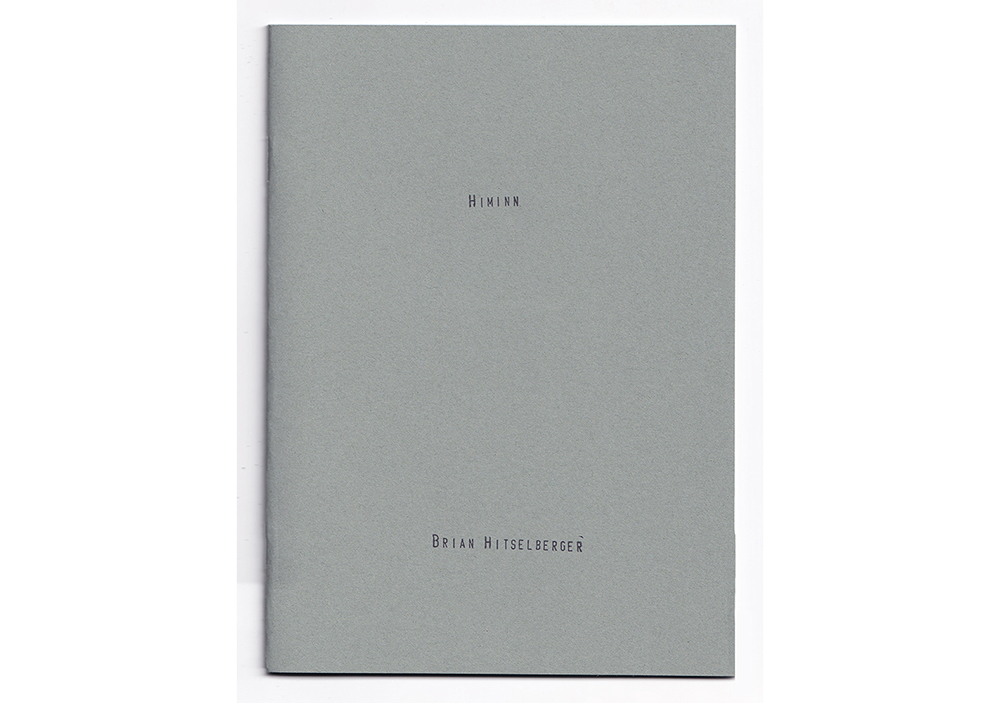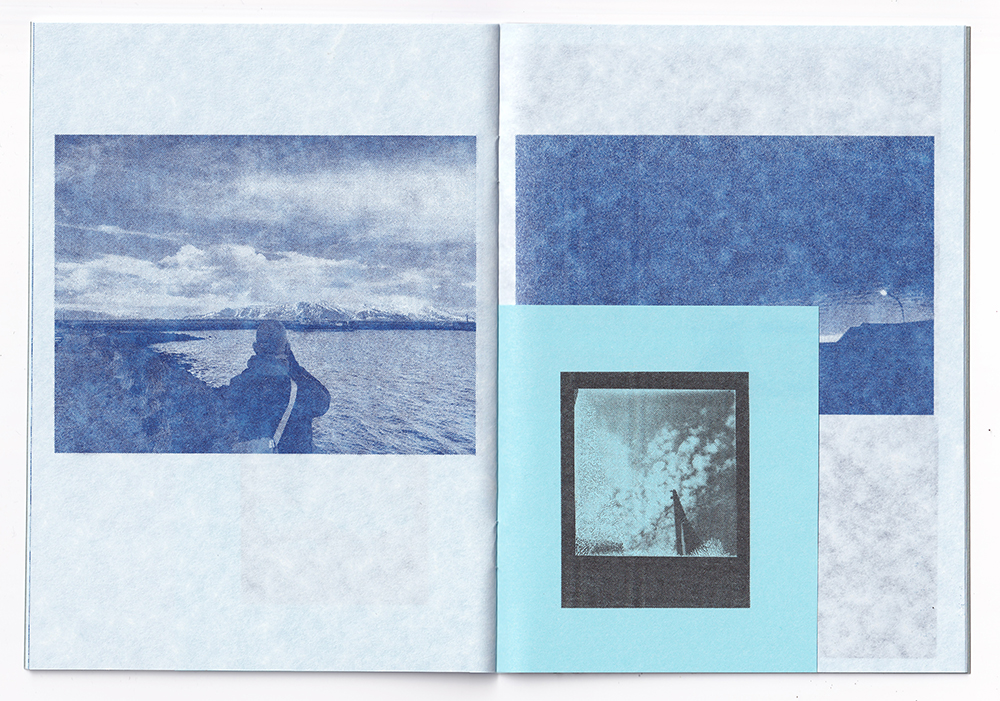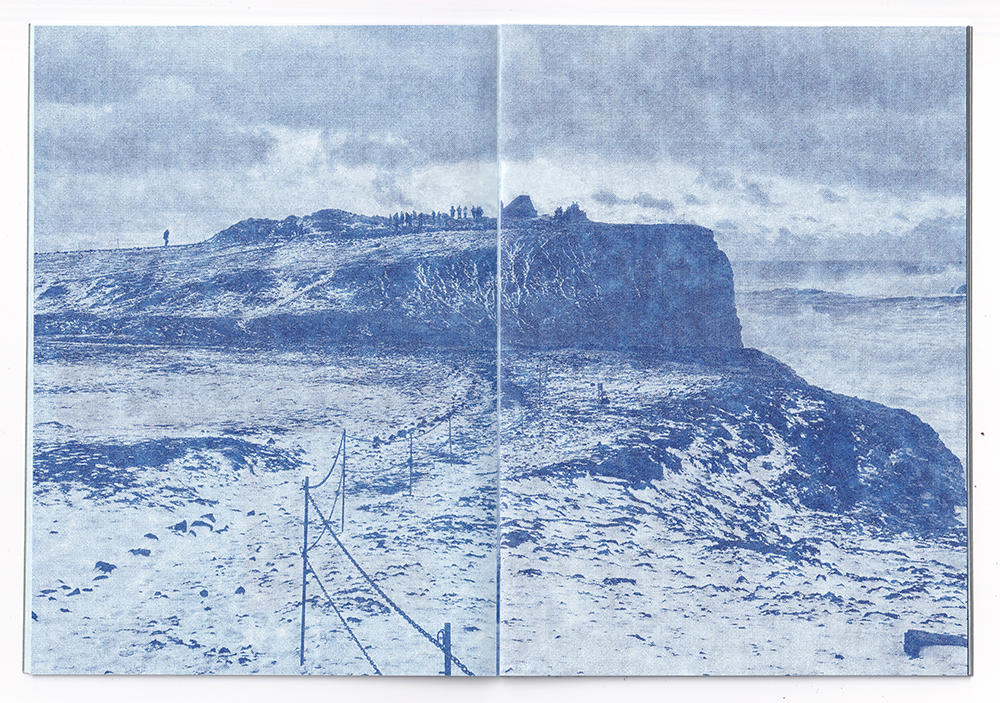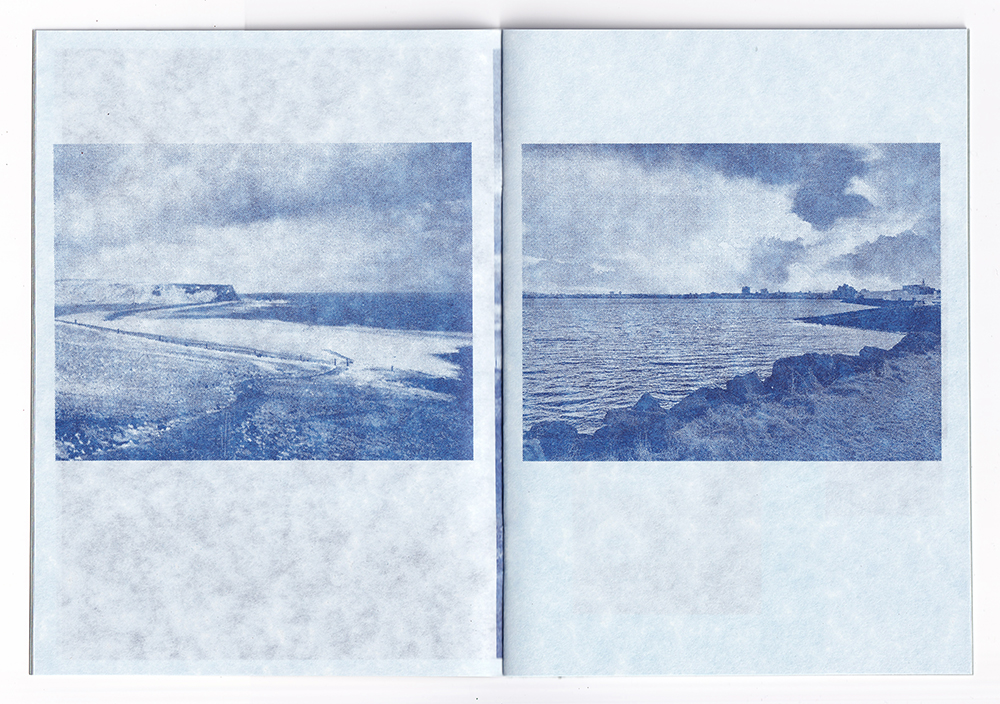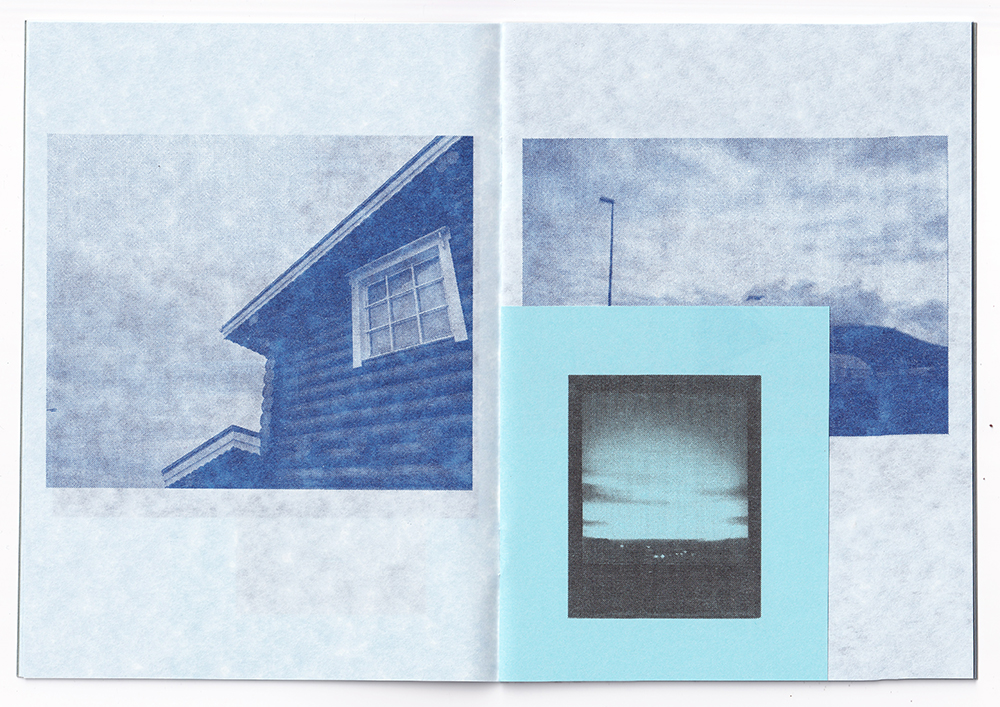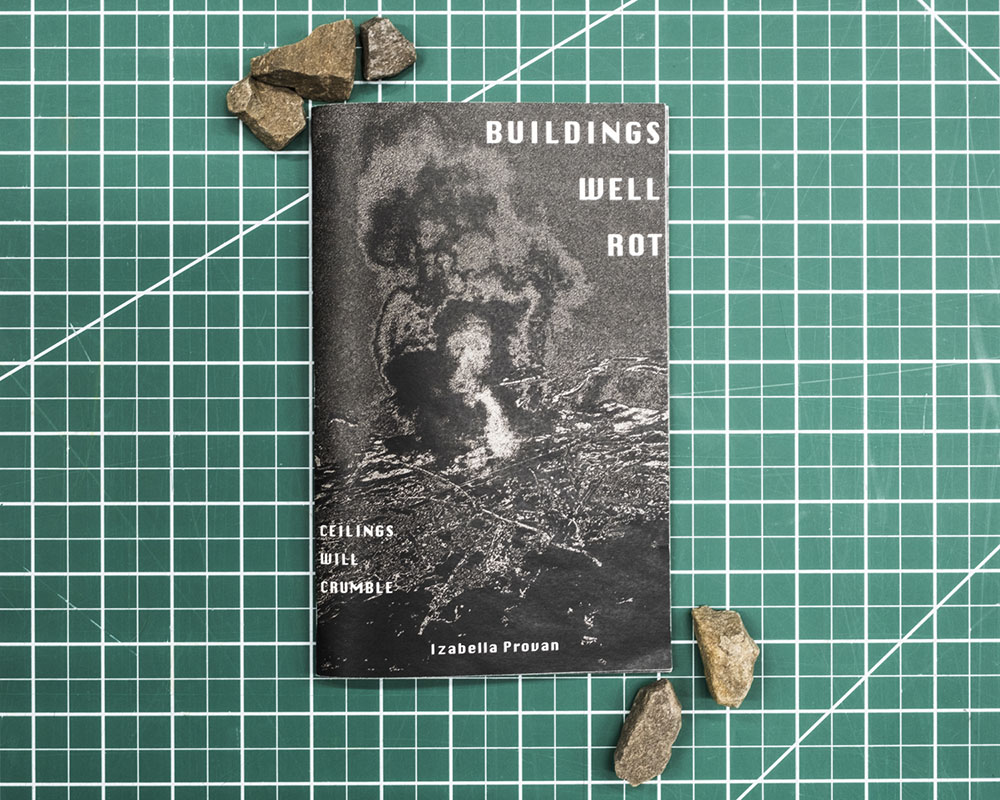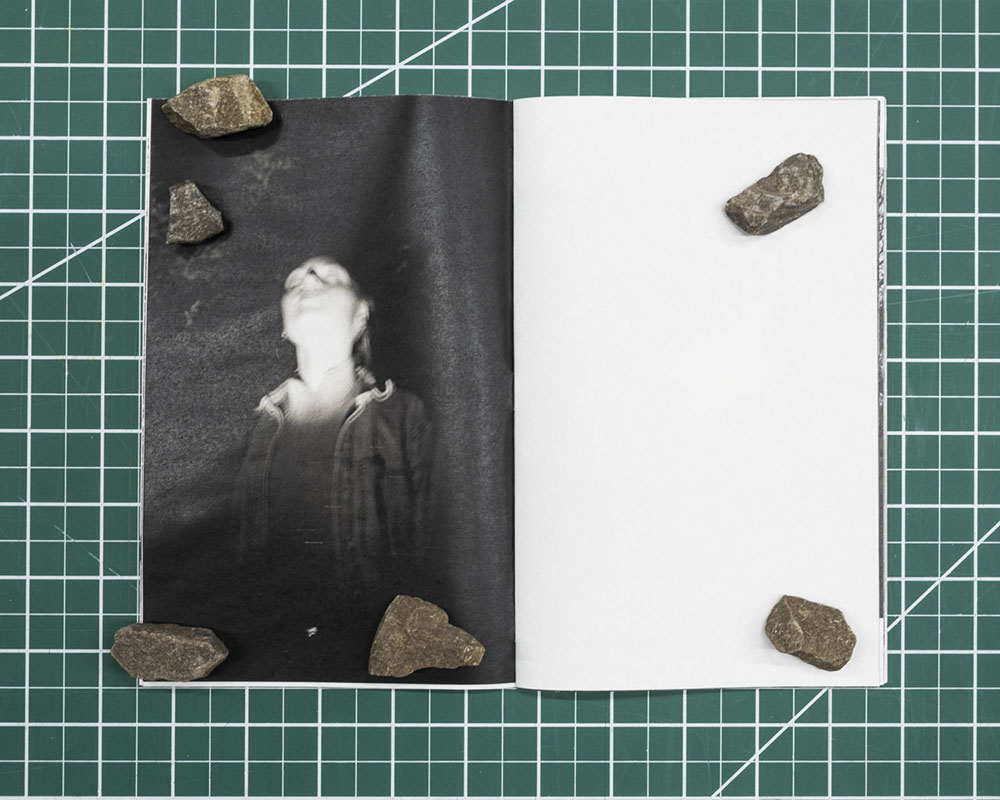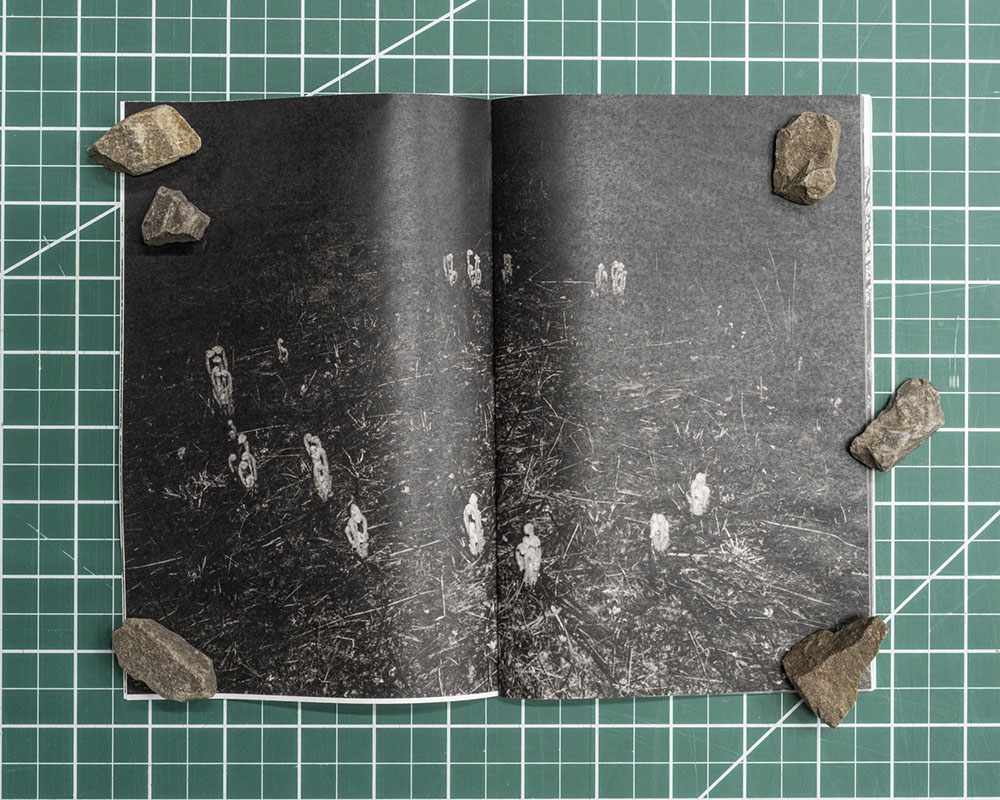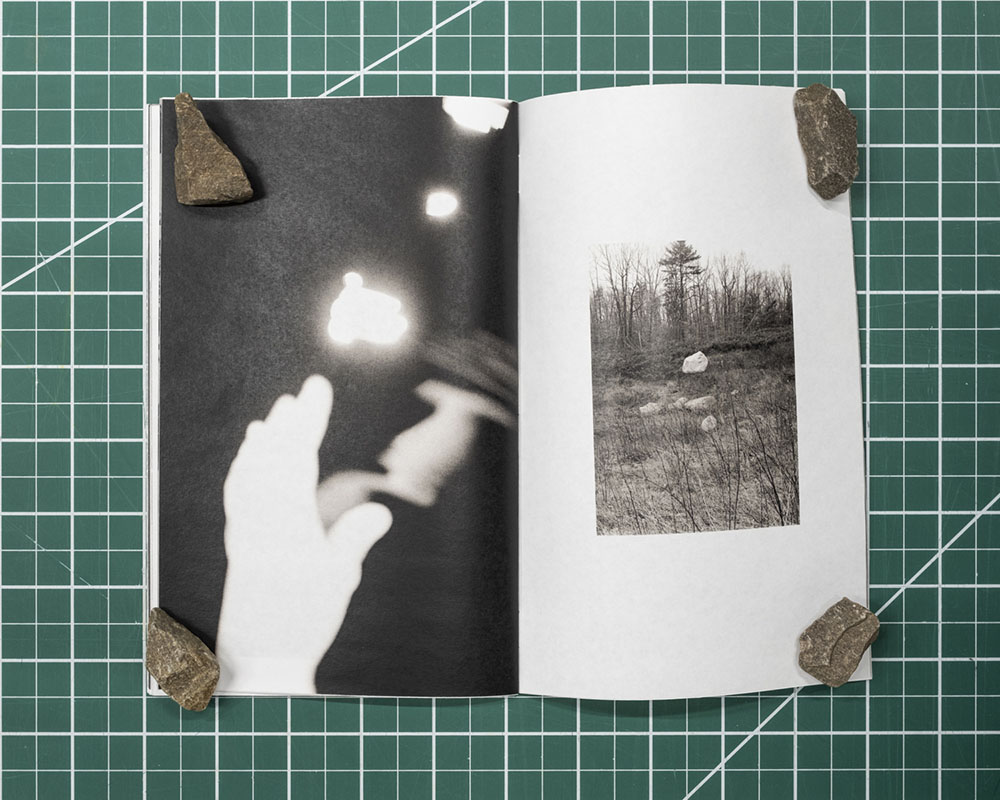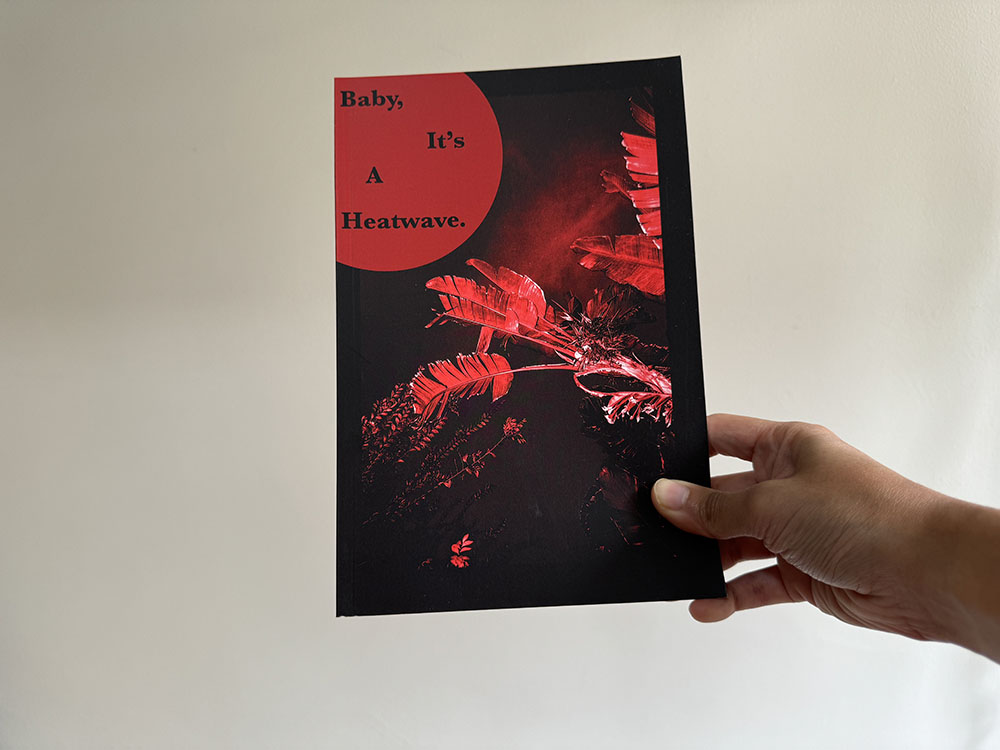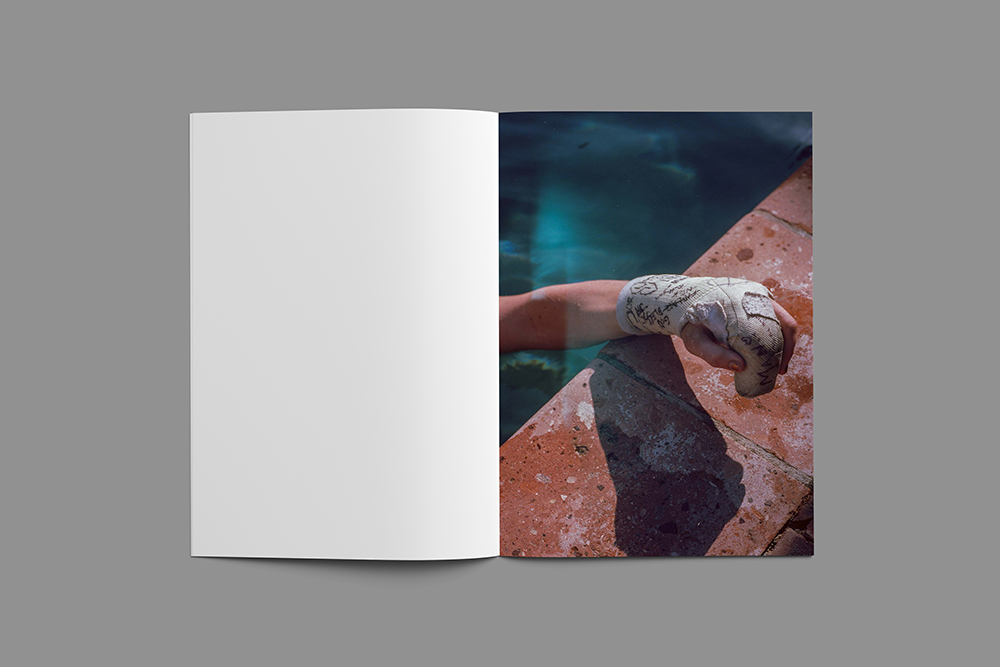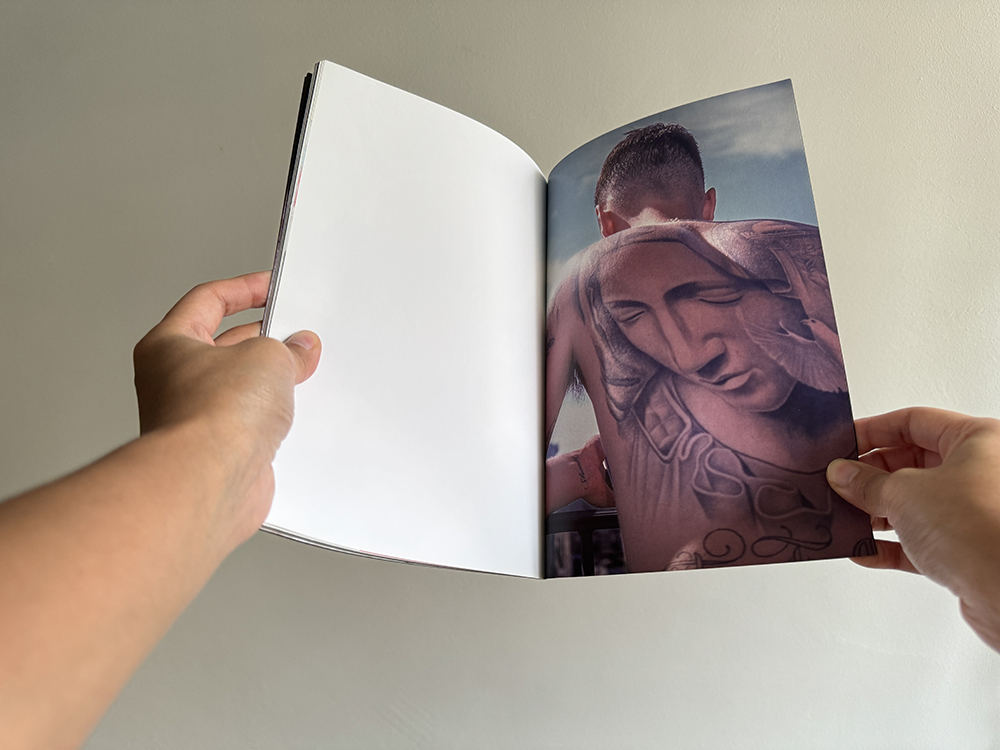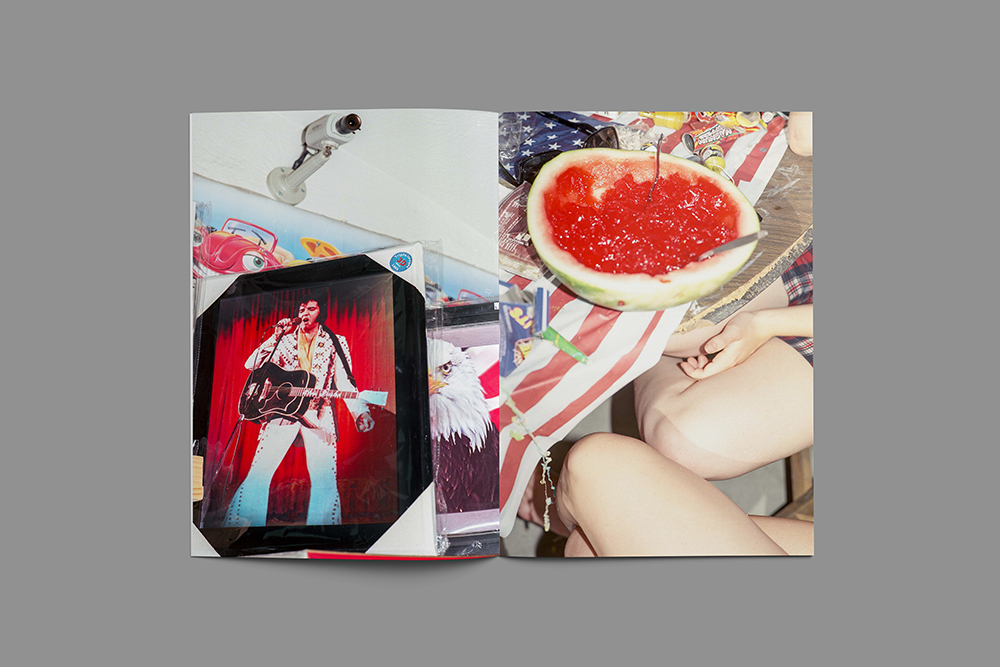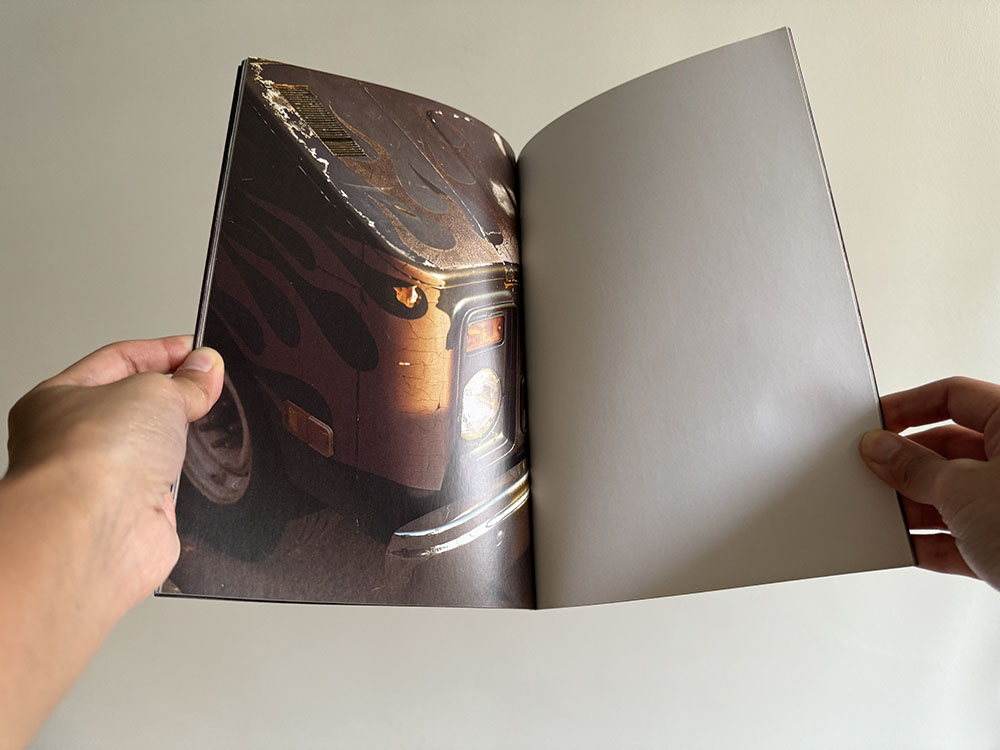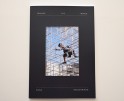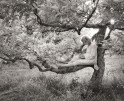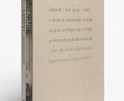All About Zines: November Issue
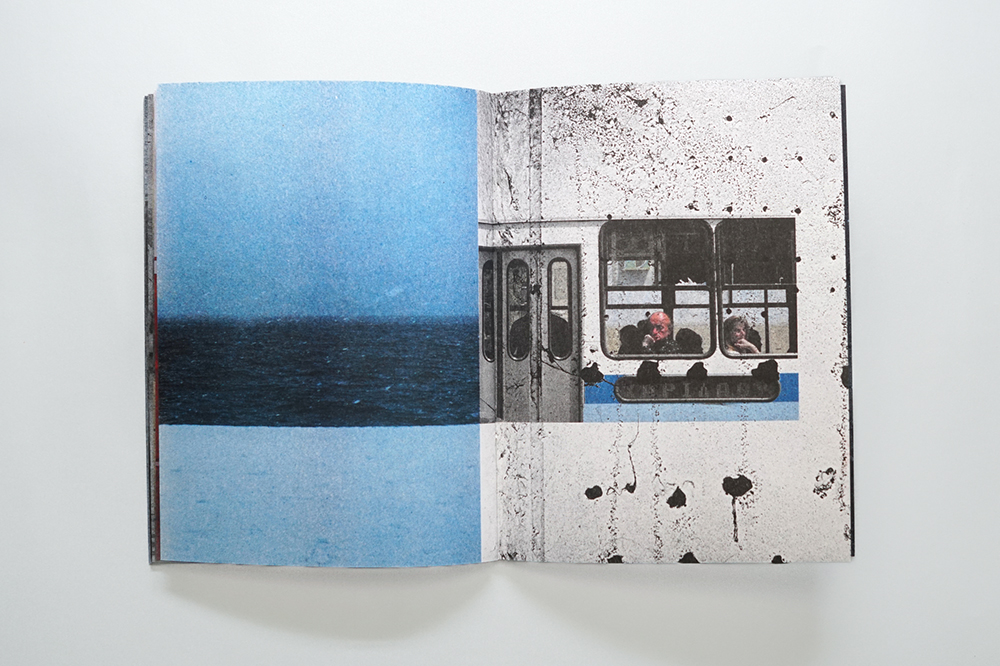
© Sophia Tolika and Kostis Argyriadis, Co-Capital, self-published in collaboration with Zoetrope Athens, 2024
For this month’s issue of All About Zines, I asked each contributing artist how they first discovered zines. For me, it was in a sophomore year critique during undergrad. One of my classmates had made a stack of pocket sized books on standard copy paper, xeroxed, and stapled twice down the spine. She handed them out to all of us before diving into the work she had been making. I still have my copy. With crooked edges, undoubtedly made fifteen minutes before class, it is the epitome of the DIY zine.
“I spent some time in Iceland at a residency last year – a very generative experience for me. Himinn came together when I realized a significant portion of the photographs that I took while traveling were essentially of the sky. Within such a powerful landscape, the Icelandic sky is a force unto itself, constantly shifting and impossible to ignore. Although these photographs were each taken in different locations and in varying weather conditions, I felt I could link them by using the risograph to print them in the same color – that distinctive risofederal blue – and create a continuity between them. They are printed on a Parchtone paper made by French, which gives each photograph a kind of mottled quality – “cloud-like,” you could say. In-between these blue images are smaller inserts of a different paper, printed with black, which feature a subset of Polaroids of the same subject. These were taken on a Polaroid Go camera, which takes smaller versions of the classic Polaroids, and in Himinn they are reproduced at a one-to-one scale.
Often, I find the direct experience of something while I’m in it almost too much to take in – making Himinn was a way to think through the time that I spent in Iceland, and my sense of it now from a distance. The title is one of several icelandic words for ‘sky,’ but in some instances, can also translate to ‘heaven.'”
Contributing artist: Brian Hitselberger
When asked how he first discovered zines, Hitselberger wrote:
I first encountered zines in the back of a record store as a lonely weird teenager growing up in the suburbs. I didn’t have a lot of access to alternative culture, and zines really spoke to me – I think I went home and immediately began making one myself. I’ve always loved them for this reason – a zine can feel like an invitation to join a conversation and contribute something of your own. Soon after that, I began to connect with other artists making zines online, and our zines became a way to have a relationship with one another that moved outside a digital sphere. I loved how my internet relationships could become tangible by trading or mailing printed matter back and forth. Although I work in a lot of different forms these days, I often come back to the zine as a way to think through something, or explore an idea quickly. Even after all this time, I still see it as a space of great potential.
Buildings Well Rot Ceilings Will Crumble
“Buildings Well Rot Ceilings Will Crumble is a handmade zine measuring 8 x 5 1⁄2 inches. It is a 40 page, 2-up saddle stitch stapled zine, printed on Butcher White (Dur-o-Tone) paper from French Paper on which I printed (mostly) black and white images with a laser printer. Design is minimal, but sequenced in a way that reflects a river’s path. Themes of erosion, power, and renewal are mixed in with images of sturdy and crumbling foundations.
The photographs were made during the pandemic when the excessive free time built up alongside the heavy feelings of uncertainty and paranoia. To try and stay busy, and away from crowds, I found myself in spaces that I had never been in before: floating down the rivers in Maine.
A brief sanctuary was found through canoeing, in the rhythm of paddling, the coolness of the water, the warmth of the sun, but it was hard to fully slip into the daydream, to believe that things were normal again.
Beyond the wall of trees where the highways tangled, sirens would tear through the air with regularity, making the peaceful illusion fail; the ambulances’ wailing surrounded us, emerging from every direction, reminding us where we were: on a river, in the shadow of death.
And in those moments, the water and the trees, the cities in our periphery, were the dystopian landscapes of the shows and books we found ourselves binging but in truth were actually living. Watching for signs of normalcy, it was hard to trust anything when everything felt out of place, the exit points all looked the same, the buildings alongside the rivers were empty, fog rolled in as night fell, we held onto flashlights to illuminate the darkness, and started casting spells for protection, but it still felt like the world was ending.
There was also something memorable, or potable, in the way all of the rivers we chose were loops, an idea we thought would allow for an easy escape, but instead put us right back at the beginning.”
Contributing artist: Izabella Provan
The ceiling is dripping swelling.
I heave a sigh.
Buildings
Well
Rot
Ceilings
Will
Crumble
All buildings will
one day.
Without upkeep, check-ins, concern
it will all fall apart
fear slips through fingertips
watch as what I can’t score
splits.
What happens if we let it dissolve?
Will our indents, marks, remember, remain?
or will
Soiled
Water
Seeps
into the silt
a zone for exclusion
a foundation in ruin.
Buildings Well Rot Ceilings Will Crumble are images that grew out of decay;
angry thoughts in a time of desperation became pressure exposed to shift a foundation.
Moments framed near suspicious structures and along river beds
inspired by wonder, fear, and dystopian literature: when ruin is inevitable, a certain type of magic
and escapism is yearned.
– Izabella Provan
When asked how she first discovered zines, Izabella Provan wrote:
In a printmaking class I took in college I was introduced to zines. For an assignment we were tasked to make one with some sort of message we wanted to get out into the world. Their form initially never really clicked with me (I don’t even remember the topic of my first zine, I felt like they were too small or there was not enough information… until I realized how they could connect to the artist books and photo books I aspired toward making. They were a good entry point for sequencing stories and projects. They could function as small novellas with pictures, yet still give room for larger explorations of an idea than an exhibition or gallery showing might only allow a small portion of.
“In their collaborative work, Co-capital, Sophia Tolika and Kostis Argyriadis aim to provide commentary through their lens on their birthplace and current home, Thessaloniki. Through their photos, they scrutinize whether one of the city’s designated monikers, Co-capital, accurately reflects its contemporary portrayal. The black-and-white and color photographs by the two creators intertwine with each other and with the city’s slogans, creating associative links with the history of the city while visually mirroring the torn, smudged, and detached posters commonly found on the gray walls of Thessaloniki. The muggy, stale atmosphere of the city is emphasized by the grainy texture of the images, printed in the zine using the risography method.”
Contributing artists: Sophia Tolika + Kostis Argyriadis
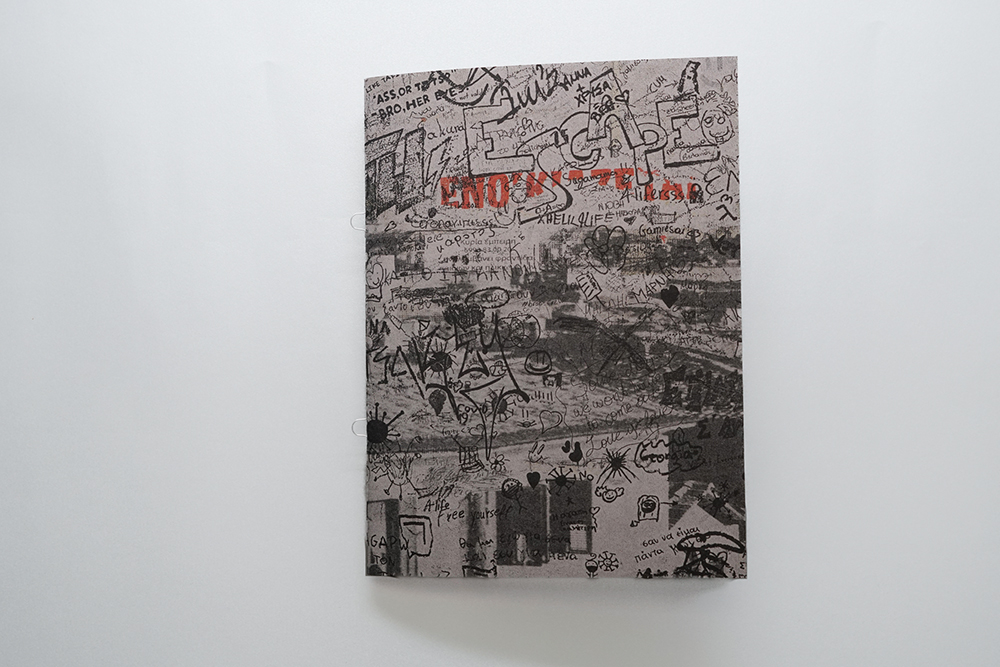
© Sophia Tolika and Kostis Argyriadis, Co-Capital, self-published in collaboration with Zoetrope Athens, 2024
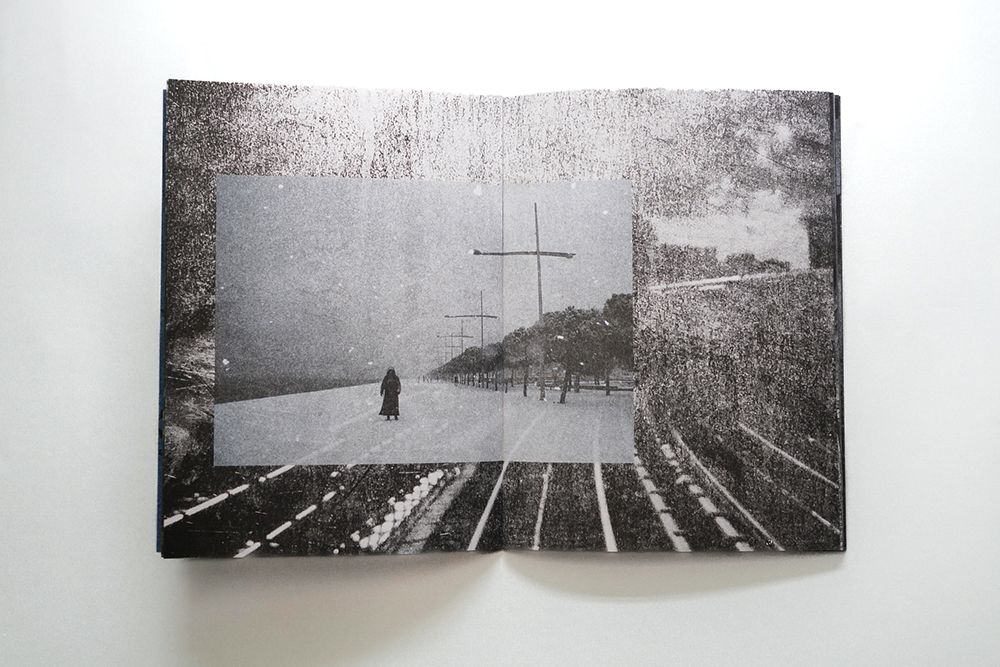
© Sophia Tolika and Kostis Argyriadis, Co-Capital, self-published in collaboration with Zoetrope Athens, 2024

© Sophia Tolika and Kostis Argyriadis, Co-Capital, self-published in collaboration with Zoetrope Athens, 2024
When asked how she first discovered zines, Sophia Tolika wrote:
The first time I came across a zine was at a vinyl shop called “Lotos” in Thessaloniki. The zine was called Emvoes, and it featured interviews and news from the world of experimental and noise music. At the time, I didn’t fully understand what a zine was until I saw an Instagram post about a place in Athens—the Athens Zine Bibliotheque—where two people opened their collection of zines to the public. I visited with some friends, and I got wonderfully lost in a vast collection of zines from all over the world, covering a wide range of topics and showcasing different printing techniques. I was deeply into photobooks then, so encountering zines felt liberating; it freed me from focusing on big projects and having to think of every detail in the process of publishing. Discovering zines was a true revelation!
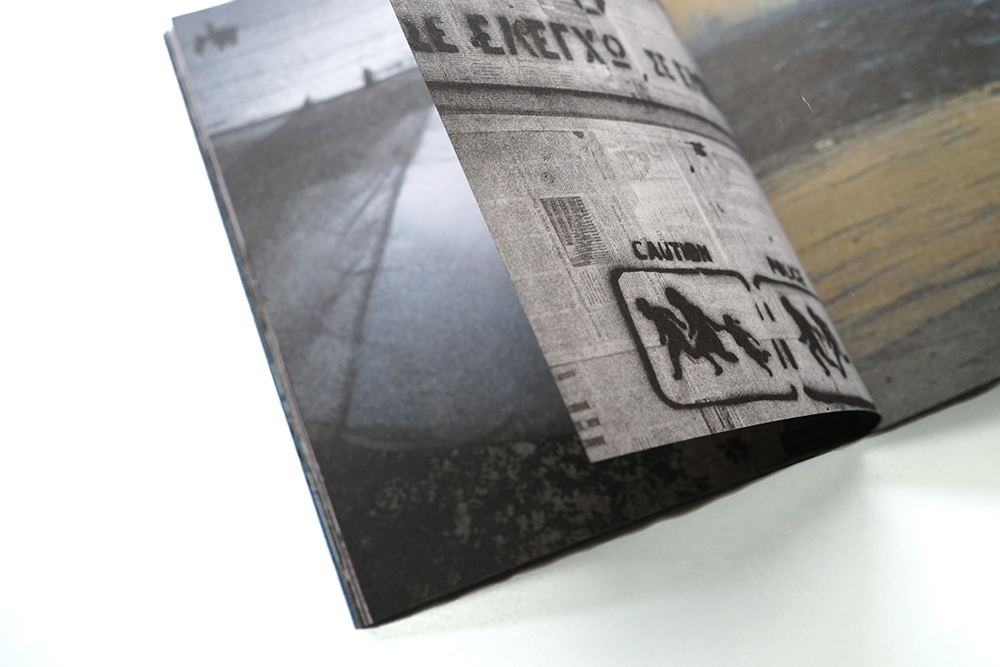
© Sophia Tolika and Kostis Argyriadis, Co-Capital, self-published in collaboration with Zoetrope Athens, 2024
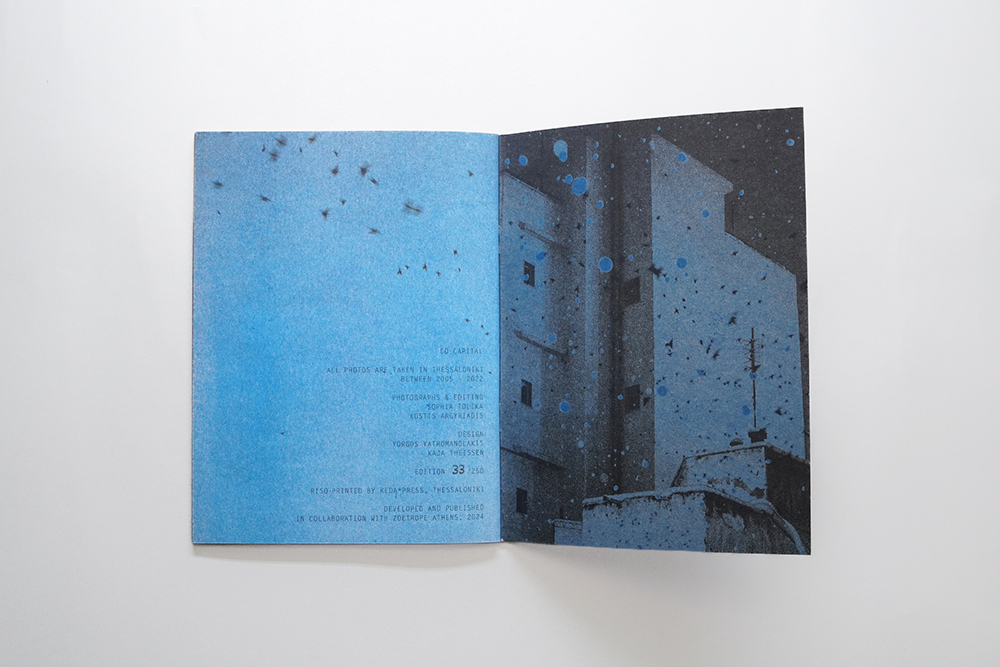
© Sophia Tolika and Kostis Argyriadis, Co-Capital, self-published in collaboration with Zoetrope Athens, 2024
“Baby, It’s A Heatwave is a photographic exploration set in the heart of Los Angeles, captured over a year by photographer Julien Sage. ‘Summer is more of a feeling than a season. It’s not just about the weather, but the sense of freedom you feel as a kid,’ says Sage. Through these images, Sage presents a love letter to the Angelino summer, filled with both heat and nostalgia. The recurring motifs throughout the project reflect themes of freedom, celebration, the interplay between the artificial and the real, and the bittersweet beauty of fading light. Accompanying the images, a poem by Sage adds a lyrical depth to this vivid tribute to the Los Angeles summer.”
Contributing artist: Julien Sage
When asked how she first discovered zines, publisher Huda Azzis wrote:
I don’t really remember how I came to knowing about zines. It was probably when I was a teenager, sometime in 2010 or 2011 and I probably came across it on Tumblr.. At that point, I was still in school and I was obsessed with collecting these fashion magazines – especially I-D,Frankie magazines.
The first zine I came across were these like black and white xerox printed photozine. I think they were by Hamburger Eyes and I was pretty much blown away by the idea of it. First of all, it wasn’t anything like magazines, although they could look the same. Unlike a traditional magazine where there is a team of people working around it and everything looks so polished and clean- a zine can just be one person’s work. Anyone can make them by hand and then sell them. That was something fascinating to me, I never knew that you can just print stuff on an A4 paper, fold, stapled them and there’s your first ever zine. Soon, I started collecting photozines mostly on Etsy then Instagram came along and people started selling their zines there so I collected more. I was always intrigued by photozines specifically, just because I don’t really like to read. So it’s really a fun way – collecting photozines from some of your favourite photographers. Along the way, the idea of making a zine crept up on me and gradually I started making one myself. First was at home with a lousy cheap ass printer. I made some copies but nobody really bought it haha. Then subsequently, I got it printed at a proper print shop. I don’t really know how to put it into words but it’s just so nice to see your work on print – it’s a diff feeling. A nice feeling.
Posts on Lenscratch may not be reproduced without the permission of the Lenscratch staff and the photographer.
Recommended
-
Paccarik Orue: El MuquiDecember 9th, 2025
-
Kinga Owczennikow: Framing the WorldDecember 7th, 2025
-
Richard Renaldi: Billions ServedDecember 6th, 2025
-
Ellen Harasimowicz and Linda Hoffman: In the OrchardDecember 5th, 2025
-
Linda Foard Roberts: LamentNovember 25th, 2025

